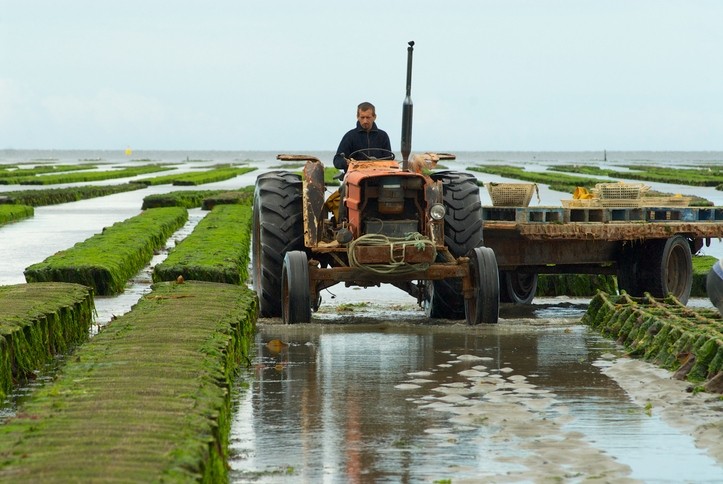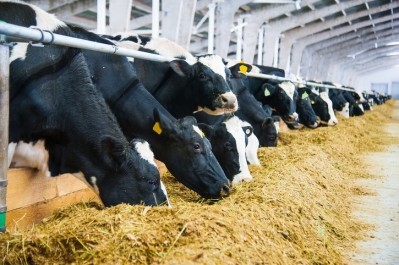'A more robust algae farming industry in the US will provide us with new and sustainable agricultural products'

The introduction of the Algae Agriculture Act of 2018 has seen some bi-partisan support in the US House of Representatives. The bill aims to provide policy support for the growth of algae for use in multiple areas including as a feed ingredient.
The Algae Biomass Organization, the trade association for the algae industry, is backing the legislative action.
The bill may be the first step in adding algae farming to the list of primary crops produced in American agriculture, said Matt Carr, executive director of the Algae Biomass Organization (ABO).
“New technologies in cultivation, harvesting and processing are just beginning to make a new generation of algae-based products a reality,” he added.
“We already see multi-million-dollar investments to produce algae-derived omega-3 fatty acids for the nutritional market, new food oils, cooking ingredients, and more,” he said. “In the coming years, we’ll also see algae proteins in animal feeds, whole algae soil amendments and carbon sequestration projects. Yet we are not even close to seeing the full potential, in part due to the relatively small amount of support that algae cultivation gets from federal agricultural policy.”
“A more robust algae farming industry in the US will provide us with new and sustainable agricultural products, economic development and food security,” he added.
Bill overview
The bill has been referred to the Committee on Agriculture and the Committee on Energy and Commerce for consideration. It seeks to include algae production systems in the National Handbook of Conservation Practices.
The measures would also make algae eligible for the non-insured crop disaster assistance program and allow for insurance policies for algae production if it is grown for use in feed, food or bio-products.
The bill seeks to improve support for algae research as well. It calls for the establishment of an Algae Protein Center of Excellence to improve the pace of development of an algae-based industry addressing the major protein markets of animal feed, aquaculture feed and food. It also asks for a study of algae protein production potential.
Industry enthusiasm
Overall, the bill, if passed, brings more support to research algae’s uses, applications and commercial prospects, said Carr. It also would highlight the role algae could play in bringing new revenue sources to rural communities and make it easier to find support for investment in algae crops.
“This bill takes advantage of the same research strategies that have made the US an agricultural leader in other crops,” he said. “By opening the doors at USDA to algae we can help the research community exploit algae’s potential to produce more protein and high-value oils than virtually any other crop, use brackish or polluted water, grow on marginal lands, and even consume carbon dioxide from power production.”
Algae is a new crop in the US and it can be a challenge to gain investments, he said. Expanding options and opportunities to work with algae makes production more mainstream and could allow it to move from being only a commodity crop to being seen as a part of the solution in ecosystem support, nutrient management, rural manufacturing, energy and soil health.
“Algae cultivation is, at its heart, all about agriculture,” he said. “More ABO members than ever are pursuing applications in markets for foods, feeds and fertilizers – as well as on-farm nutrient management. The USDA is a natural place to direct much of that research, and doing so will only accelerate the role algae can play in solving global challenges.”
Providing additional opportunities to algae to access research grant funding through the USDA would help support development, said Carr.
“ABO members expect algae cultivation will play a big role in how the world feeds growing populations, especially as traditional farming resources continue to be pressured,” he said. “With algae’s ability to grow on marginal lands, with brackish or polluted water, and with carbon and nutrient recycling, there is no question an investment in R&D now will have a big payoff in the future.”
As there starts to be large-scale cultivation of algae, like the work being done by Evonik and Royal DSM to generate feed additives or by companies like BioProcess Algae, Corbion and Algenol there needs to be additional policy support offered to algae cultivation, he said. “As with any agricultural commodity, algae farmers face risks,” he added.
“The investments made by thousands of US farmers with the peace of mind that a natural disaster or crop failure won’t ruin their business has made American agriculture one of the most productive industries in the world,” he said. “Extending the same protections to algae cultivation will have a similar effect for a remarkable new crop that can deliver a wide range of economic, food security and energy benefits. This bill takes the first step by directing USDA to study what it will take to establish an algae crop insurance program.”















